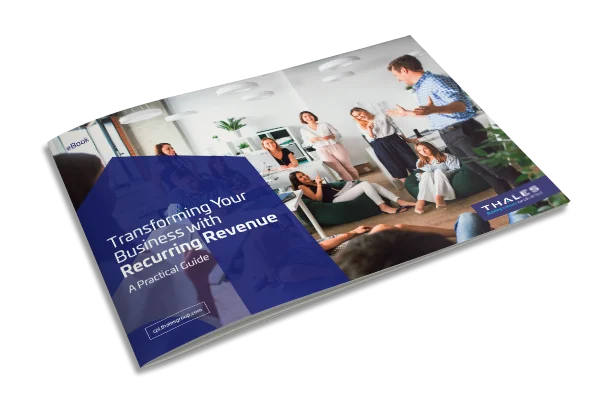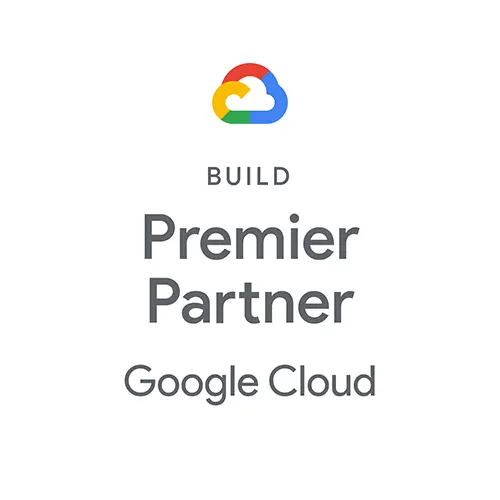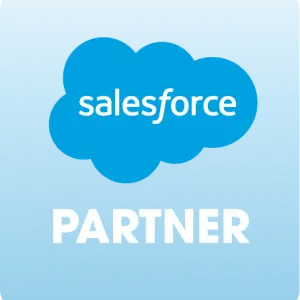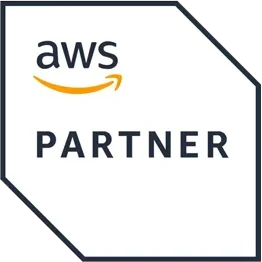Navigate the world of pricing models and pricing strategies with this comprehensive SaaS pricing guide.
In this guide, you’ll learn:
- The ins and outs of various pricing models, including traditional SaaS cost structures and innovative B2B enterprise SaaS pricing.
- How sophisticated pricing and packaging diversifies revenue, leading to long-term profitable growth.
- The way software licensing — a critical and often overlooked element of software fulfillment — is intricately connected to pricing.
Let's dive in!
Software Pricing Models and Strategies
What is a Software Pricing Model?
Your pricing model determines how much a customer will need to pay to acquire the software license and access the features of your product.
Popular pricing models include one-time purchase fees, subscription-based models, usage-based fees, tiered pricing, or value-based pricing.
What Should You Consider When Evaluating SaaS Pricing Models?
Selecting the right B2B SaaS pricing models can impact revenue growth, customer retention, and overall business success. Consider these three things when evaluating a pricing model for your product:
1. Target Market and Industry
The target market and industry for your software offering can heavily influence SaaS pricing models. Consider factors such as the size of the businesses you serve, potential market growth, and potential geo-expansion.
Take your research even further by identifying the specific customer segments within your industry that are particularly enthusiastic about your product. Determine their unique pain points, needs, and then price and package to effectively address those challenges.
2. Functionality and Value Proposition
Identify where you add the most value, then charge customers accordingly.
Traditionally, SaaS companies charge a higher price for access to a product tier that includes additional software features.
Companies can also monetize usage, or resources consumed. For example, usage or storage-based models appeal to customers who are looking for a clear cost/value alignment.
3. Competitor Pricing and Market Conditions
Analyze your industry's competitive landscape, market trends, and emerging technologies. You may need to adjust your pricing strategy in the face of economic downturns or customer needs and behavior shifts.
Ultimately, there is no one-size-fits-all approach to pricing.
You might juggle numerous software pricing models, especially as you move into enterprise sales, utilize channel partners, or evolve from a single product to a platform. We’ll get into that further when discussing taking pricing models to the next level.
Types of Software Pricing Models
Two Generic Types of Software Pricing Models
At the most basic level, there are two types of pricing models:
- The Perpetual Model
- The Recurring Revenue Model
Traditional software providers generally use the up-front or perpetual model, while subscriptions are the core of SaaS billing models.
As more legacy software providers seek recurring revenue, SaaS pricing is increasingly relevant across all markets and segments.
1. The Perpetual Model
With the perpetual license model, the buyer has access to the product indefinitely after purchasing it. This model is usually associated with traditional or enterprise software providers.
Advantages:
- Generates upfront revenue for the vendor
- Provides customers with a sense of ownership and control over the software
- Can incentivize customers to use the software more since they have already made the investment
- Simple to implement
Disadvantages:
- Can be a significant upfront expense for customers, which may deter some from purchasing
- May be less attractive for customers who only need the software for a short time
- Revenue is less predictable since it is dependent on new purchases
- Requires a robust license enforcement and protection to avoid intentional or unintentional misuse
2. The Recurring Revenue Model
A subscription-based pricing model is when customers pay a regular fee to use a product at set intervals (monthly, yearly). Within subscriptions, businesses offer different pricing tiers based on the number of users, features, storage access, or other value metrics. Most successful SaaS companies use some form of subscription pricing.
Advantages:
- Provides a predictable revenue stream for the vendor
- Encourages customer loyalty and long-term commitments
- Allows you to provide updates and improvements to the software
Disadvantages:
- May be more expensive in the long run for customers
- Revenue is dependent on renewals (which are often influenced by customer experience and market conditions)
- May be less attractive for customers who only need the software sporadically
Your software holds the key to recurring revenue.
Don’t leave money on the table. Struggling to make the shift?
This guide shows you how to unlock new growth.
The Most Common SaaS Software Pricing Models
Now that we understand the difference between subscription and perpetual pricing let's take a closer look at some of the most popular SaaS pricing strategies. Looking for examples of each pricing model? Click here.
Per-User (also called seat-based) Pricing Model
A per-user or seat-based pricing model is a payment structure where the cost of a product or service is determined by the number of users or "seats" that will have access to it. The total cost increases as more seats are added.
For example, Acme Inc. offers three pricing tiers:
- Tier 1: 1-50 licenses - $100 per license
- Tier 2: 51-100 licenses - $80 per license
- Tier 3: 101+ licenses - $60 per license
Advantages:
- Allows for scalability as you charge more for more users
- Provides a predictable revenue stream for the vendor
- Encourages customer loyalty and long-term commitment
Disadvantages:
- May not be cost-effective for small businesses selling to a limited number of users
- Licenses can intentionally or unintentionally shared, creating revenue leaks for a vendor
- May incentivize customers to limit the number of users to save on costs
Usage-Based Pricing Model
The usage-based pricing model usually includes multiple tiers based on the volume utilized (amount of data, time, storage, etc.). Users can upgrade as they reach usage limits.
Advantages:
- Customers only pay for what they use, making it a cost-effective option for sporadic or low-usage customers
- Can provide a scalable revenue model for you as usage grows
- Is cost effective while providing opportunities for growth and flexibility
Disadvantages:
- Can be difficult to predict revenue since it is dependent on usage
- May not be cost-effective for high-usage customers
- Implementation requires a system that can operationalize complex billing and usage tracking
Feature-Based Pricing Model/Tiered Pricing Model
In feature-based pricing, (also called tiered pricing) the price is determined by the number and complexity of the features included in the plan. This pricing model is popular for software with a wide range of features.
Advantages:
- Gives users the flexibility to choose a plan with the features they need
- Encourages users to upgrade to higher-tier plans to access more features
- Can provide users with a sense of cost control as they don't have to pay for features that are not important to them
Disadvantages:
- May make it difficult for users to compare pricing between software products
- Users may not fully understand what features they need and may end up overpaying for unnecessary features
- Can be complex to operationalize a customer's right to access specific features
Value-Based Pricing Model
Value-based pricing models charge customers based on the perceived value of the software instead of basing it on production costs plus average marketplace markup.
Advantages:
- Allows you to sell your product at a higher price because you understand the value you provide
- Can provide a competitive advantage by differentiating the software from competitors
- Revenue is less dependent on volume, making it more predictable
Disadvantages:
- Requires significant research to figure out the value of the impact of your product
- Can be difficult to communicate the value proposition to potential customers
- May not be a feasible option for software with broad appeal or limited differentiation from competitor
Freemium Pricing
This one is a bit of a misnomer because it is not a pricing model. It's an acquisition model. With freemium, customers can access the software for free. More advanced features or functionality are sold with a separate pricing model.
Advantages:
- Offers a low-risk way for customers to try the software, potentially leading to upsell opportunities
- Attracts a large user base and can increase brand recognition
- Allows you to collect data on customer usage and preferences
Disadvantages:
- Can be difficult to convert free users to paying customers
- Revenue may be limited to a small percentage of paying customers
- May require a significant investment in marketing and customer acquisition efforts to attract a large user base
Hybrid Pricing
A hybrid pricing model combines multiple pricing strategies. For example, you could use a user-based pricing model sold via a subscription while monetizing add-on features.
Advantages:
- Allows you to diversify revenue strategies
- Provides a predictable revenue stream for the vendor
- Offers flexibility for customers to choose the pricing plan that best fits their needs
Disadvantages:
- Can be complex to implement and manage for the vendor
- May make it difficult for customers to compare pricing between different pricing plans
- Can create complexity in billing and pricing structures for both you and the customer
Using Pricing To Power Revenue Growth
Diverse Pricing and Packaging Strategies Lead to Revenue Growth
As an early-stage SaaS provider, you probably started with a simple pricing approach that was easy to put into the market. However, your pricing model will evolve as you gain insights into customer preferences and value perception.
Here are a few ways to think about a more diverse pricing strategy:
Offer Packages per Customer Segment
Expand your customer base and consider packaging your core product to meet the needs of various segments. Tailor your product packaging to address each segment's unique needs and preferences. This approach allows you to attract a wider audience and increase sales. It also reduces the risk of relying on one customer segment.

Align Pricing With Perceived Value
Another monetization technique is pricing according to perceived value. The question is what pricing axis will incentivize buyers to move up a pricing tier. For example, your customer might want lots of users to be able to use your software product product. This means they'd be willing to upgrade to a new pricing tier if it provides access to more users. Others might be more incentivized to tier up if they get access to upgraded features.
The idea is that your monetization team prioritizes identifying a pricing axis that aligns with the value driver for your customers. With the correct tools and processes, you can take this method even further and introduce multiple pricing axis to satisfy a range of customer needs.
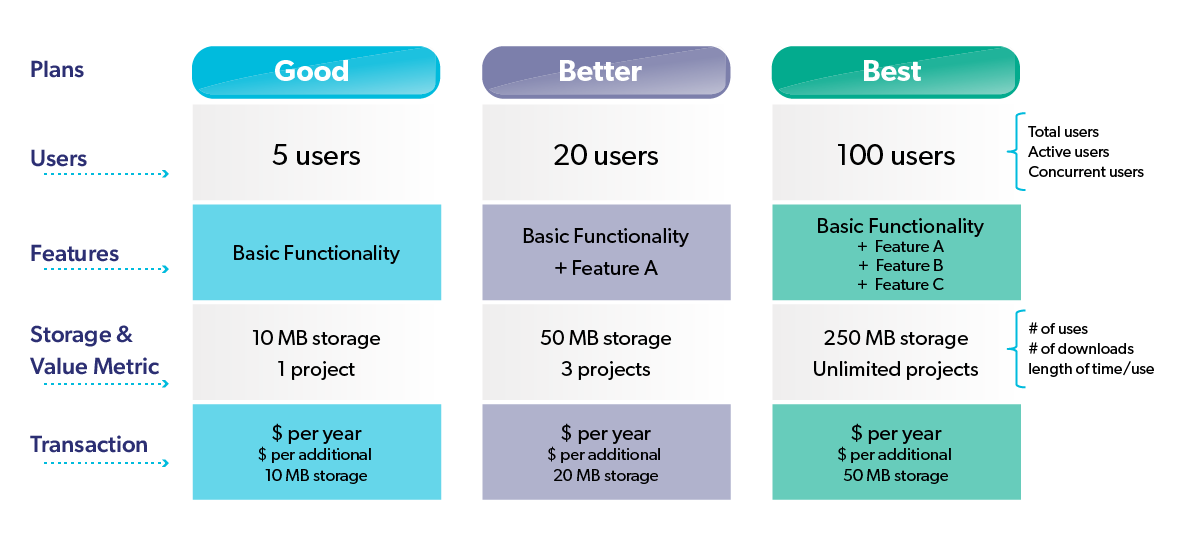
Go From Pricing Strategy to Operational Reality
The ability to deliver new pricing fast, securely and at scale is directly linked to a licensing and entitlements infrastructure.
This integration involves a delicate interplay of various departments, systems, and processes. One of the most important, and often overlooked aspects of operationalizing pricing is software licensing.
It’s common for someone to say they are buying a license for software. But purchasing a software license is more like renting a movie instead of buying it. Your company still owns the software, but you let users access it. On a technical level, the software license mechanisms control customer access to features and components, allowing a company to operationalize a given pricing model.
- The pricing model determines how much customers will pay for your product.
- The licensing model controls the permissions, restrictions, and usage rights associated with the product.
Software license and entitlement management establish rules that operationalize a given pricing model. It does this by controlling access to the following:
Services the customer can access
The services the customer can access should be clearly defined and enforced. This ensures that customers have access to the features they are entitled to and prevents unauthorized use.
Time restrictions on user access
The license agreement also defines when the customer can access the software purchase. It should include the initial access rights, renewal terms, and a license enforcement capability.
Number of users with access
The software license also includes the number of users with authorized access. This component ensures you're compensated for each user and can help prevent unauthorized use.
Locations permitted for access
The software license or entitlement can also specify where users can activate their software. This includes geographic regions, deployment modes such as on-premises or cloud, and even specific hardware or networks.
Usage limits or restrictions
The license agreement may also include specific usage restrictions, such as limitations on the number of transactions, data storage, or API calls.
Access to features
Entitlements define the activation or deactivation of customer access to specific features within the software.
NOTE: In many environments, especially in complex enterprise SaaS pricing modules, entitlements are becoming just as relevant as licenses.
A license typically grants the customer the right to utilize the software in compliance with the agreed-upon terms.
Entitlements are like licensing 2.0. They control granular access privileges associated with a software license.
Entitlements are often utilized in complex pricing and packaging environments. They are central to operationalizing sophisticated enterprise SaaS pricing strategies.
The Sentinel platform, from Thales, provides the industry's most trusted licensing and entitlement capabilities.
For more on Entitlements, read The Guide to Entitlement Management.
Thales' Licensing and Entitlement Platform Unlocks Growth at Scale
If you’re considering new approaches to help better monetize your software, using a licensing and entitlement management platform could be a good option.
Thales' Sentinel platform provides comprehensive licensing and entitlement capabilities.
With features like flexible licensing models, entitlement management, license enforcement, and usage tracking, and Sentinel platform is the key to operationalizing growth at scale.
Related Resources
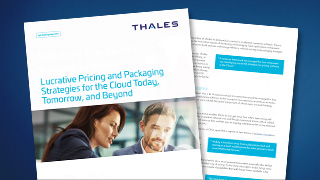
Lucrative Pricing and Packaging Strategies for the Cloud Today, Tomorrow, and Beyond
Software pricing and packaging is an art form regardless of whether it’s delivered as a service or as physical on premise software. There is also a lot of science involved. This paper explores the most critical aspects of introducing and managing SaaS applications and presents independent software vendors (ISVs) with ideas on how to build, execute and manage effective software pricing and packaging strategies for cloud services and recurring revenue streams.

Licensing Success Stories: Geocap Shifts from Flexera to Sentinel
When they evaluated Thales Sentinel to replace Flexera, Geocap found that Thales Sentinel solutions offered a complete set of utilities and variety of beneficial features, backed by exceptional support.
Like most software vendors, Geocap AS needed a licensing solution in order to control their licensing terms and conditions. The company originally chose FlexNet Publisher (FNP), a licensing platform sold by Flexera. Unfortunately, Geocap was dissatisfied with FNP for a variety of reasons.

